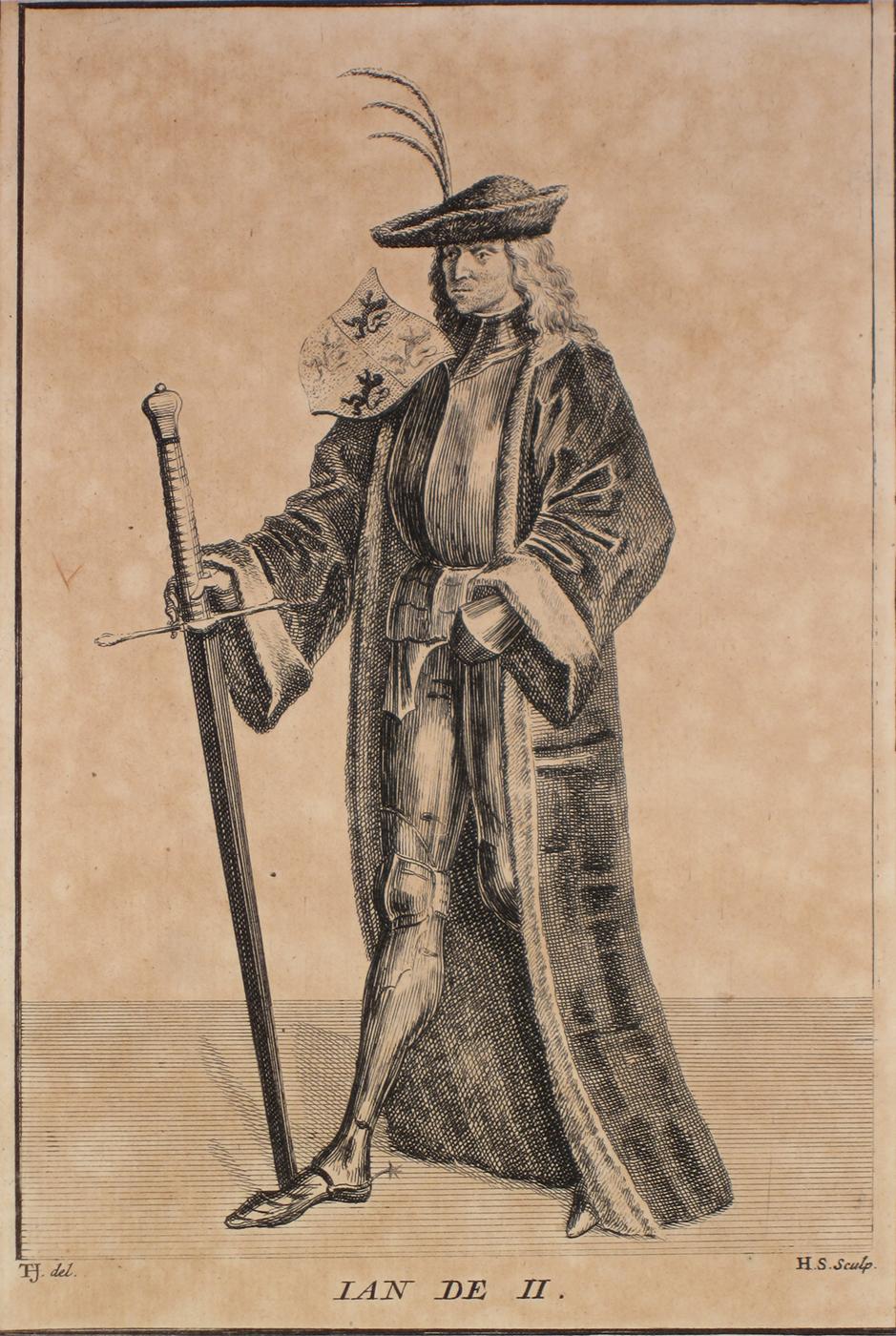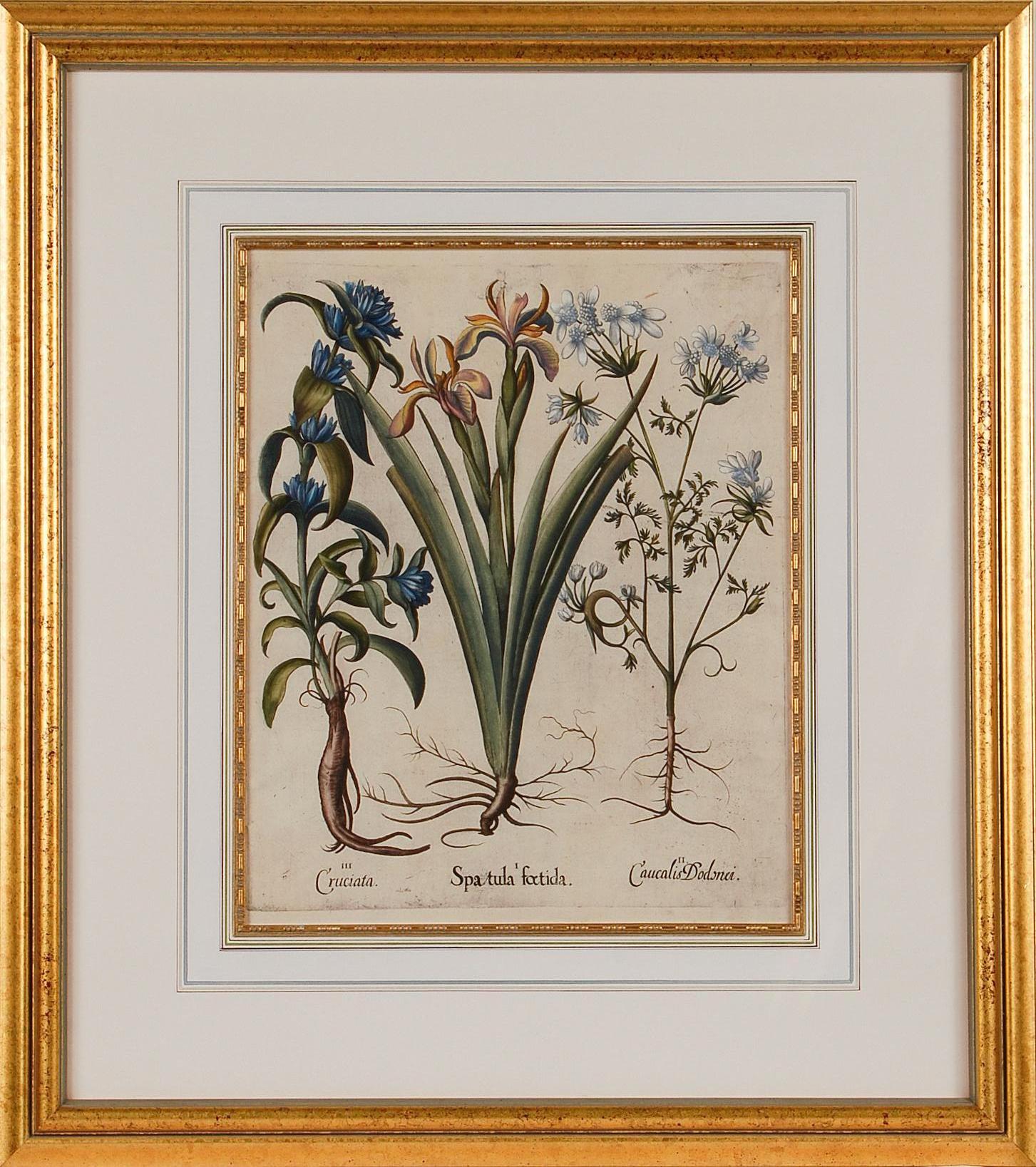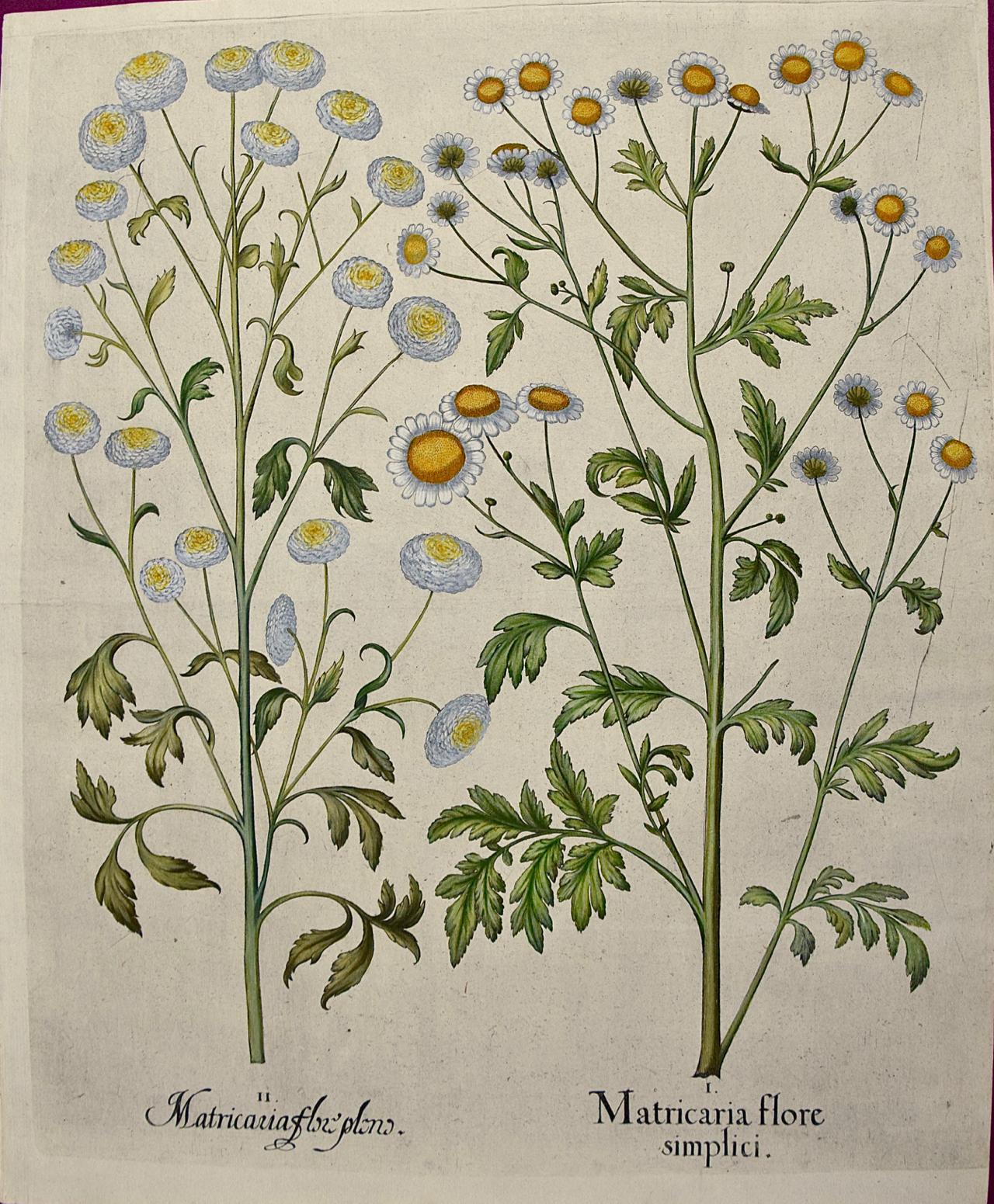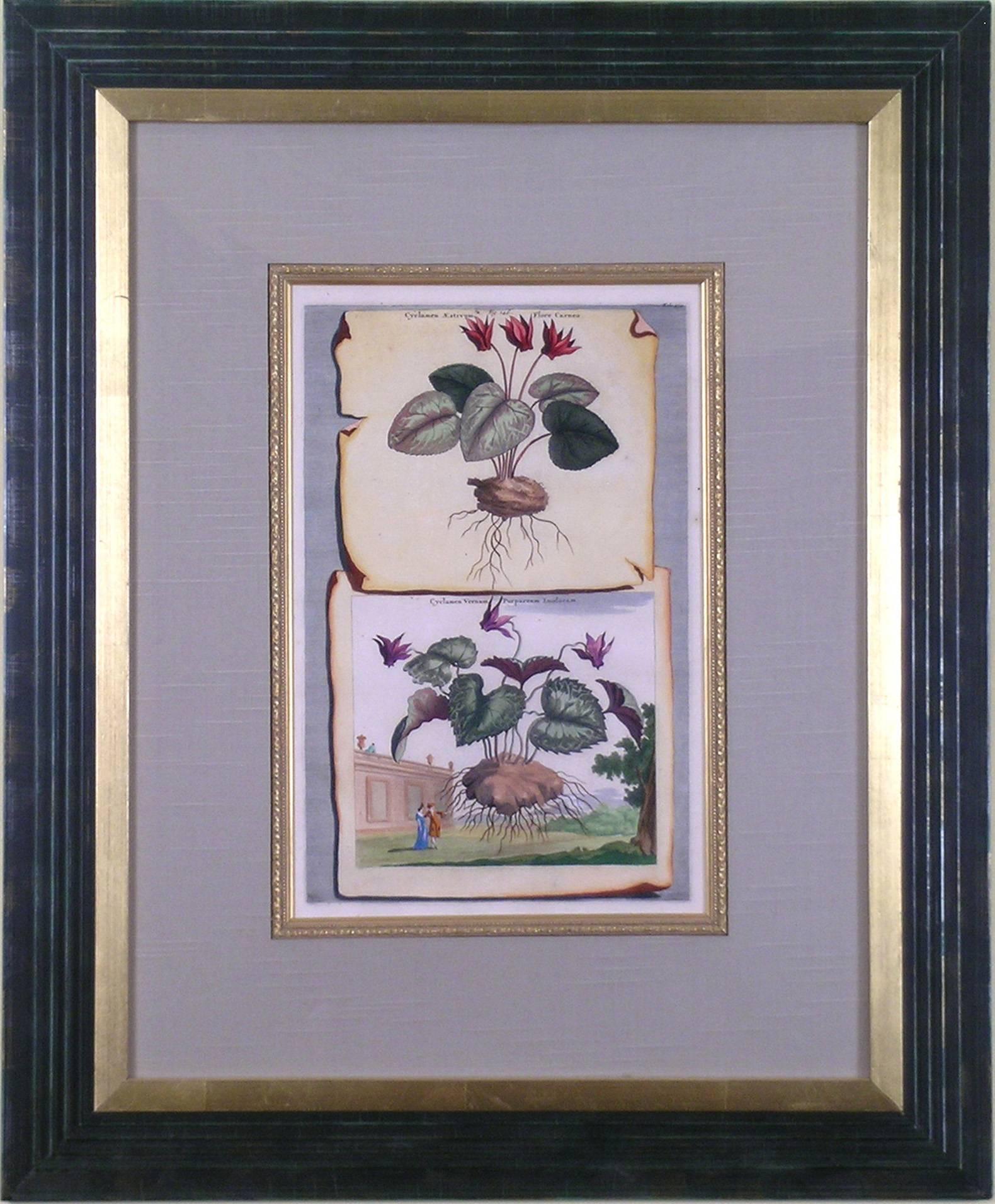Items Similar to Indian Reed (Cana)
Want more images or videos?
Request additional images or videos from the seller
1 of 8
Dr. Robert John ThorntonIndian Reed (Cana)1804
1804
About the Item
DR. ROBERT JOHN THORNTON (c1765 – 1832).
The Temple of Flora.
London, 1798-1810.
Painted by Reinagle, Henderson, Pether, et. al.
Engraved by Ward, Caldwall, Earlom, et. al.
Aquatint, mezzotint, and/or stipple engraving finished by hand.
Approximately 17.75” x 22.5” Unframed.
5 frontice pieces, 32 plates; generally 29-30 per volume, 1 or more frontice pieces.
As a boy, Robert John Thornton (d.1837) demonstrated his love of natural history with his own botanical garden and an aviary, which contained every species of English hawk, most of them captured by himself. He took his Cambridge M.B. and, following in his father's footsteps, set up practice as a London doctor. Upon inheriting the family fortune in 1797, Thornton desired to leave his mark on the world in the form of a massive work dedicated to Carolus Von Linnaeus, the great Swedish naturalist. For his own aggrandizement and that of his beloved England, Thornton wished it to surpass in scope, illustration, paper, and topography any publication produced in any other European country. He felt he was engaged upon "a national undertaking", and dedicated this homage of philosophic and literary distinction to Queen Charlotte. It was to be titled The Temple of Flora; or Garden of Nature Picturesque Botanical Plates of the New Illustration of the Sexual System of Linnaeus. Desiring the national glorification of botany and its alliance with the arts of painting and engraving, Thornton was the first person to juxtapose landscape backgrounds with his floral subjects. He opened an art gallery of the paintings from which the prints were made and subscriptions for the forthcoming books were sold. Copies of the work were sent to the Queen and Prince Regent, and to the Emperor of Russia, who sent Thornton a ring in acknowledgment of the "splendid and elaborate Botanical works."
The Thornton prints, originally to number seventy in all, were barely published in an edition of thirty at the author's expense between the years 1799 and 1807. Despite his efforts, Thornton was unable to succeed financially. Technically The Temple of Flora, as it came to be known, was not a success due to botanical inaccuracies and rather insipid text all based on Thornton's aesthetic sense. However, it is the forceful stylization of flowers, together with their historical, allegorical and fanciful backgrounds that place The Temple of Flora among the greatest botanical books of all time.
Though Thornton actually painted only one picture used for the engravings in his Temple, "The Roses", he literally directed his flower pictures. He chose the plants, arranged the symbolism and the backgrounds. For example, in the "Night-Blowing Cereus" the moon illuminates the turret clock, which has just struck midnight, the hour when this flower is fully open. Henderson, Reingal, Edwards and Pether are among the artists hired by Thornton to work on the flower designs and their backgrounds. Many times they would collaborate, as in the aforementioned "Cereus" where it states "The Flower by Reinagel, Moonlight by Pether". These plates were executed by the likes of Bartolozzi and other English master engravers and are a varied combination of mezzotint, aquatint, stipple engraving and finished in watercolor by hand. The text, primarily composed by Thornton, was lengthy, somewhat fanciful and included rather exaggerated poetry. Thornton was a man of his era, a time of romanticism, when artistic tastes ran to the sentimental, symbolic, and dramatic. The flowers from the Temple of Flora are delightful examples of that style.
In spite of tremendous public exposure and a dedication to Queen Charlotte, Thornton's venture was a financial disaster. While he attributed this to the continental war, no doubt his over-zealous attention to details, none too scientific, largely contributed to his failure. By 1811, Thornton was forced to petition Parliament for permission to set up a lottery. "An Act to enable Dr. Robert John Thornton to dispose of his collection of paintings, drawings and engravings, together with several copies of certain books therein mentioned, by way of chance" was passed in May of that year. Thus, the Quarto or Lottery edition of The Temple of Flora was published. This work, smaller in scale but not in romantic spirit, was to salvage Thornton's expenses for the original folio edition. Hoping to sell twenty thousand tickets at two guineas each, Thornton estimated the worth of his ten thousand prizes to be 77,000 pounds. This was a generous estimate as the complete sale of tickets would be worth no more than 42,000 pounds. Once again, Thornton's venture resulted in disaster. For the remaining years of his life, Thornton continued his medical practice with varying success, and attempted a brief, unhappy collaboration with the poet William Blake. Sadly when he died in 1837 his family was almost destitute. But despite these early failures, The Temple of Flora has now a permanent place as one of the greatest prizes of all time.
Reference:
Flower & Fruit Prints. Dunthorne. Da Capo Press. Washington, D. C., 1938.
The Temple of Flora: Robert Thornton. King. Little, Brown and Company, NY, 1981.
- Creator:Dr. Robert John Thornton (1768 - 1837, English)
- Creation Year:1804
- Dimensions:Height: 38.5 in (97.79 cm)Width: 30.5 in (77.47 cm)Depth: 1.75 in (4.45 cm)
- Medium:
- Movement & Style:
- Period:
- Condition:Framed to museum specifications using archival matting, backing, hinging. Glazed with ultraviolet filtering Plexiglas. Mirrored frame.
- Gallery Location:Florham Park, NJ
- Reference Number:
Dr. Robert John Thornton
Robert John Thornton (1765-1832) was attracted to natural history at an early edge and created his own botanical garden and an aviary as a boy. He graduated from Cambridge with a medical degree and set up practice as a London. He inherited his family fortune in 1797, which allowed Thornton the opportunity to devote time to his lifelong goal of creating an extensive scholarly work dedicated to the great classical Swedish naturalist, Carolus Von Linnaeus (1707-1778), also known as Carl von Linné, who developed a system for the classification of plants and animals, and is known as the father of taxonomy. Thornton's goal was to exceed any previous publication produced in any European country in terms of the scope of the project, the quality of the illustrations and the paper, as well as the beauty of the landscapes depicted as backgrounds for the plants. Thornton was the first person to incorporate landscape backgrounds with his botanical subjects. He wanted for the publication to be of both academic importance as well as artistic beauty. He dedicated his work and subsequent publication "The Temple of Flora; or Garden of Nature Picturesque Botanical Plates of the New Illustration of the Sexual System of Linnaeus" to Queen Charlotte. Thornton opened an art gallery to display the paintings from which the prints were made and as a place to sell subscriptions to the forthcoming books. Queen Charlotte, the Prince Regent, and the Emperor of Russia received copies of the book. Although the publication was not successful financially for Thornton, the stylization of the illustrated flowers and their historical, allegorical and fanciful backgrounds led to The Temple of Flora being considered one of the greatest botanical books of all time.
About the Seller
5.0
Vetted Seller
These experienced sellers undergo a comprehensive evaluation by our team of in-house experts.
1stDibs seller since 2014
161 sales on 1stDibs
Typical response time: 2 hours
- ShippingRetrieving quote...Ships From: Florham Park, NJ
- Return PolicyA return for this item may be initiated within 1 day of delivery.
More From This SellerView All
- Cyclamen (Purple)By Abraham MuntingLocated in Florham Park, NJAbraham Munting (1626 – 1683) Naauwkeurige Beschryving der Aardgewassen Leiden and Ultrech, Germany, 1696 Publishers: Pieter vander Aa and Francois Halma Folio, 15 ¼ “ x 10 ¼ “ ...Category
18th Century and Earlier Academic Still-life Prints
MaterialsWatercolor, Engraving
- Tempio di Romolo, e RemoBy Antonio AquaroniLocated in Florham Park, NJROMA A. Aquaroni. Engraving. Modern Hand-Color. Rome, 1750. Ever wonder what pre-dated the postcard? By the mid-eighteenth century, travel and exploration had become a we...Category
18th Century and Earlier Academic Prints and Multiples
MaterialsWatercolor, Engraving
- Cyclamen (White)By Abraham MuntingLocated in Florham Park, NJAbraham Munting (1626 – 1683) Naauwkeurige Beschryving der Aardgewassen Leiden and Ultrech, Germany, 1696 Publishers: Pieter vander Aa and Francois Halma Folio, 15 ¼ “ x 10 ¼ “ ...Category
18th Century and Earlier Academic Still-life Prints
MaterialsWatercolor, Engraving
- Take Away the Pricks of PleasureBy CLAUDE PARADIN (c1510-1573)Located in Florham Park, NJCLAUDE PARADIN (c1510-1573) Devises Heroiques et Emblemes Woodcut. Paris, 1614. The emblem has played an important role throughout history. Found on ...Category
17th Century Academic More Prints
MaterialsEngraving
- BeansBy Matthäus Merian the ElderLocated in Florham Park, NJMATTHAUS MERIAN, the Elder (1593-1650) Der Fruchtbringenden Gesellschaft Nahmen. Frankfurt, 1646. Engraving with Later Hand-Color. 400 Plates. Image Size 4.5” x 5.25” Unframed. ...Category
18th Century and Earlier Academic Still-life Prints
MaterialsEngraving, Watercolor
- SquashBy Matthäus Merian the ElderLocated in Florham Park, NJMATTHAUS MERIAN, the Elder (1593-1650) Der Fruchtbringenden Gesellschaft Nahmen. Frankfurt, 1646. Engraving with Later Hand-Color. Matthew Merian was one of the most prolifica...Category
18th Century and Earlier Academic Still-life Prints
MaterialsWatercolor, Engraving
You May Also Like
- John II, Count of Hainaut Holland & Zeeland (1247-1304)Located in Sydney, NSW18th Century (c1740) etching/engraving , John II, Count of Hainaut Holland & Zeeland (1247-1304)Category
19th Century Academic Figurative Prints
MaterialsEngraving, Etching
- Flowering Iris & Other Botanicals: Framed 17th C. Besler Hand-colored EngravingLocated in Alamo, CAThis is a hand-colored copper-plate engraving entitled "I. Spatula foetida - II. Caucalis Dodonei - III. Cruciata", depicting three flowering plants, including an Iris, from Basilius Besler's landmark work, Hortus Eystettensis (Garden at Eichstatt), first published in 1613 in Eichstatt, Germany near Nuremberg and later in 1640 and 1713. This beautiful hand-colored botanical engraving is presented in a gold-colored wood frame with a French mat...Category
Mid-17th Century Academic Still-life Prints
MaterialsEngraving
- Flowering Feverfew Plants: A 17th C. Besler Hand-colored Botanical EngravingLocated in Alamo, CAThis is a hand-colored copper plate engraving entitled "Matricaria Flore Simplici, Matricaria Flore Pleno, depicting flowering Feverfew and Double-flowered Feverfew plants, from Basilius Besler's landmark work, Hortus Eystettensis (Garden at Eichstatt), first published in 1613 in Eichstatt, Germany near Nuremberg and later in 1640 and 1713. The feverfew plant is also known as featherfew, featherfoil, or bachelor’s buttons...Category
1640s Academic Still-life Prints
MaterialsEngraving
- Flowering Lily Plants: A 17th C. Besler Hand-colored Botanical EngravingLocated in Alamo, CAThis is a hand-colored copper plate engraving entitled "Cataputia Vulgaris, Parietaria Sylvestris, Nummularia", depicting flowering Spanish Nut, Yellow Turk's-cap Lily, Yellow Turk's...Category
1640s Academic Still-life Prints
MaterialsEngraving
- Flowering Pomegranate & Rock Rose: A 17th C. Besler Hand-colored EngravingLocated in Alamo, CAThis is a hand-colored copper-plate engraving entitled "Cistusflore Albo, Balaustium Flore Minori Romanum, Cotinus", depicting flowering Pomegranate, Rock Rose...Category
1640s Academic Still-life Prints
MaterialsEngraving
- A set of Biblical prints after the Dutch painter and engraver Gerard HoetBy Gerard HoetLocated in London, GBThe present collection is a set of 131 prints after Gerard Hoet, the Dutch golden age painter and engraver, depicting various biblical scenes. Hoet was a leading artist in the Classicizing Dutch Academic style, and his work is defined by history paintings, with a particular interest in mythological, classical, historical, and biblical scene, in particular Old testament scenes...Category
Early 1700s Academic Figurative Prints
MaterialsInk, Paper, Black and White, Engraving






